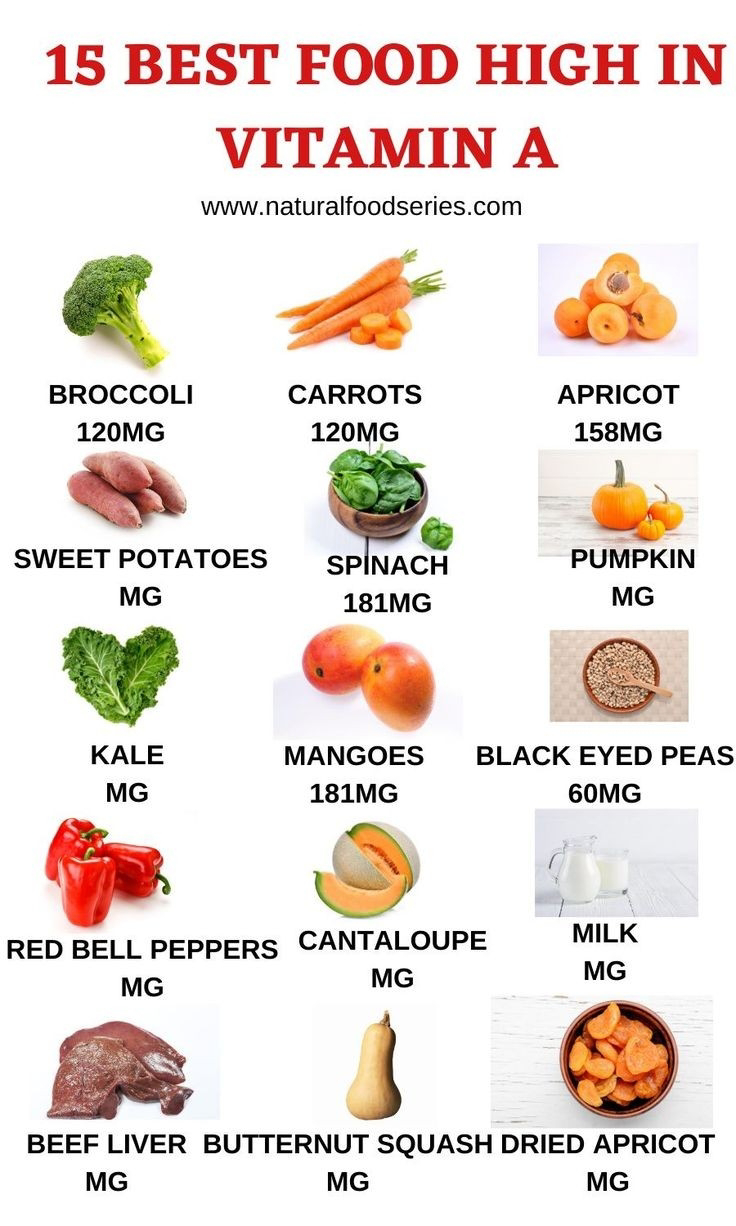"Vitamins A" all information Vitamin A is a fat-soluble vitamin that is essential for various bodily functions, including vision, immune system support, reproduction, and maintaining healthy skin and mucous membranes. It exists in two primary forms: retinoids (preformed vitamin A) and carotenoids (provitamin A). Retinoids: These are active forms of vitamin A that can be directly utilized by the body. They are found in animal-based food sources like liver, fish, eggs, and dairy products. The three main forms of retinoids are retinol, retinal, and retinoic acid. Carotenoids: These are plant pigments that the body can convert into vitamin A. Beta-carotene is the most well-known carotenoid, but there are many others like alpha-carotene and beta-cryptoxanthin. Carotenoids are abundant in colorful fruits and vegetables like carrots, sweet potatoes, spinach, kale, and bell peppers. Here are some key functions and benefits of vitamin A: 1. Vision: Vitamin A is essential for maintaining good vision, especially in low-light conditions. It plays a crucial role in the formation of rhodopsin, a protein in the eyes that enables them to detect light. A deficiency in vitamin A can lead to night blindness and other vision problems. 2. Immune System Support: Vitamin A is involved in the development and maintenance of the immune system. It helps in the production and maturation of immune cells, enhances the body's ability to fight infections, and supports the health of mucous membranes that act as barriers against pathogens. 3. Skin Health: Vitamin A promotes healthy skin by supporting cell growth and differentiation. It is often used in skincare products to treat acne and reduce the appearance of wrinkles and fine lines. 4. Reproduction and Growth: Vitamin A is necessary for the proper development of embryos during pregnancy. It also plays a role in the growth and development of children. 5. Antioxidant Properties: Beta-carotene and other carotenoids function as antioxidants in the body, helping to neutralize harmful free radicals and protect cells from oxidative stress. 6. Bone Health: Vitamin A contributes to bone growth and remodeling processes, supporting bone health and density. 7. Gene Expression: Vitamin A is involved in regulating gene expression and cellular differentiation, impacting various physiological processes. It's important to note that while vitamin A is essential for health, excessive intake of retinoids (usually through supplements) can lead to hypervitaminosis A, which can cause toxicity and adverse effects. However, excessive intake of carotenoids from natural food sources is not associated with toxicity. The recommended daily intake of vitamin A varies depending on age, sex, and life stage. It is typically measured in international units (IU) or micrograms (mcg). For specific dietary guidelines, it's best to refer to the recommendations provided by reputable health organizations or consult with a healthcare professional. In summary, vitamin A is a crucial nutrient with diverse functions in the body. A balanced diet that includes a variety of colorful fruits, vegetables, and animal-based foods can help ensure an adequate intake of this vital vitamin. Certainly! Vitamin A can be obtained from a variety of food sources. Here are some examples of foods rich in vitamin A: 1. Animal-Based Foods: Liver (beef, chicken, pork) Fish (salmon, mackerel, tuna) Eggs Dairy products (milk, cheese, butter) 2. Orange and Yellow Vegetables: Carrots Sweet potatoes Butternut squash Pumpkin 3. Leafy Green Vegetables: Spinach Kale Swiss chard Collard greens 4. Other Vegetables: Red bell peppers Broccoli Peas 5. Fruits: Mangoes Cantaloupe Apricots Papaya 6. Fortified Foods: Some breakfast cereals and dairy alternatives may be fortified with vitamin A. 7. Carotenoid-Rich Foods: Tomatoes (contain lycopene) Red, orange, and yellow bell peppers Watermelon (contains lycopene) Red grapefruit (contains lycopene) Remember that some foods provide vitamin A in the form of preformed retinoids, while others contain provitamin A carotenoids. Including a variety of these foods in your diet can help you meet your daily vitamin A needs. It's worth noting that vitamin A is a fat-soluble vitamin, which means it is better absorbed when consumed with dietary fat. So, consider pairing vitamin A-rich foods with healthy fats, such as avocados, nuts, and olive oil, to enhance absorption. Also, cooking can break down the cell walls of certain vegetables, making the nutrients more accessible to the body. As with any nutrient, moderation is key. While vitamin A is essential for good health, excessive intake of vitamin A supplements or highly concentrated sources like liver can lead to toxicity, as mentioned earlier. A well-balanced diet that includes a variety of nutrient-dense foods can help you maintain optimal vitamin A levels without the risk of overconsumption. If you have specific dietary concerns or health conditions, it's always a good idea to consult with a healthcare professional or a registered dietitian for personalized advice.


Comments
Post a Comment